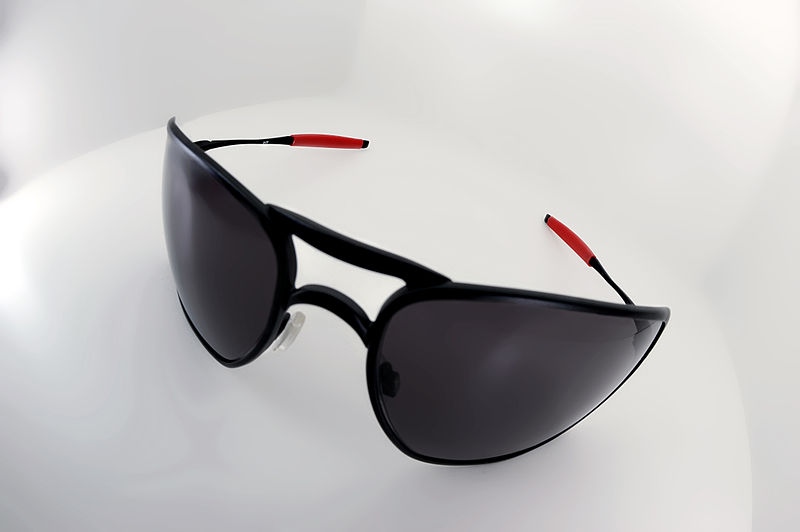Swimsuit…check!
Beach towel…check!
Sunscreen…check!
Sand toys…check!
Sunglasses…check!
Whether I’m packing for a day at the beach, or simply heading off to drop the kids off at school during the rest of the year, I instinctively don my sunglasses. With as much sun as we see, I understand the importance of protecting my eyes. But do you know what I often forget? To put sunglasses on my children!
Last week, I participated in a briefing with The Vision Council to learn about the importance of shielding children’s eyes from the sun’s harsh rays. While it seems simple enough, of the 73% of adults polled by the Vision Council who responded affirmatively that they use sunglasses, only 58% follow suit with their children. Given the fact that children receive three times the amount of sun exposure each year, when compared to adults, it’s imperative that we protect their eyes early on.
So why are children at risk of damage to their eyes from the sun?
Young eyes are susceptible to UV-related harm because the lens of a child’s eye cannot filter out UV rays. Thus, more radiation reaches the retina.
What other groups are at risk?
In many instances, both sides of the age spectrum are at risk when it comes to all-things health related, and such is the case for the elderly, who have had decades of sun exposure. The cumulative damage of the sun’s UV rays makes this population prone to visual problems and disease of the eye.
Of interest is the hypothesis that those with blue eyes may be at greater risk for UV damage because they lack protective melanin.
So what is the real risk we all face when our eyes are exposed to the sun’s UV rays?
Unfortunately, damage isn’t always easy to detect and it could take years of sun exposure before problems manifest, often when it’s too late to reverse. The sun’s rays are not visible to the naked eye and both short-term and long-term exposure can manifest in the following:
Short-term exposure: Swelling, hypersensitivity, bloodshot eyes
Long-term exposure: Cataracts, macular degeneration, abnormal growths on the surface of the eye, and cancer
So, how can we effectively protect both our eyes and our children’s eyes from the sun’s harmful rays?
The obvious answer to this question is to wear sunglasses, year-round. But all sunglasses are not equal. It’s imperative that the selected sunglasses offer protection against both UVA and UVB rays. I used to think that I could purchase a pair of sunglasses from a street vendor or a small shop and I’d be protected. Unfortunately, unless the sunglasses are purchased at a reputable retailer and include a label (either on the glasses or on the box) from the American National Standards Institute, there is no guarantee they will be effective at offering the right protection.
Be sure to keep in mind that comfort (as opposed to style) is important, or the sunglasses will never be worn. Try several pairs on when shopping and see what feels comfortable.
One other point to mention is that the style and lens can help provide optimum protection. For example, wraparound glasses or glasses with larger template pieces can protect the entire eye from the sun’s rays. Additionally, a darker colored lens (brown, amber, copper) can help reduce glare and improve clarity.
Just as you would take extra precautions to ensure your skin was shielded from the sun’s rays during peak times (i.e. summer between 10 am and 4 pm), be sure to do the same for your eyes.
When my children were younger, I had an incredibly difficult time getting them to wear sunglasses. In fact, it’s only now that my 5 year old is wearing them that my 2 year old is following suit. During the briefing, we received some tips on getting children to wear sunglasses:
1. Make sure the sunglasses fit comfortably, since those that pinch or are scratched won’t likely be worn
2. Be an example by wearing sunglasses.
3. Have children pick out their own sunglasses to increase the chances that they’ll wear them.
4. Allow kids the opportunity to personalize their sunglasses with stickers
5. Buy a pair of inexpensive sunglasses for your child’s favorite stuffed animal/doll
For more information about preserving the health of you and your children’s eyes, visit the following websites which provide a number of resources:
The Vision Council – This nonprofit organization provides education about vision health and eye safety
The Bureau of Missing Sunglasses – A campaign by The Vision Council to increase awareness of UV-related eye damage and the importance of wearing sunglasses.
Eyecessorize – An online website that offers the latest trends in eyewear for every age, lifestyle and gender.
This is part of a compensated campaign with The Vision Council and The Motherhood. I participated in a briefing and received factual information which helped facilitate this post. All opinions shared in this post remain that of the author and are not meant to replace the advice of a physician.
- Discover Luxury at Sonesta Irvine: Your Ideal Staycation - August 8, 2024
- CHOC Walk Returns to the Disneyland Resort – Special Events and Ways to Support - June 28, 2023
- Beastly Ball Returns to the Los Angeles Zoo - May 8, 2023


Leave a Reply